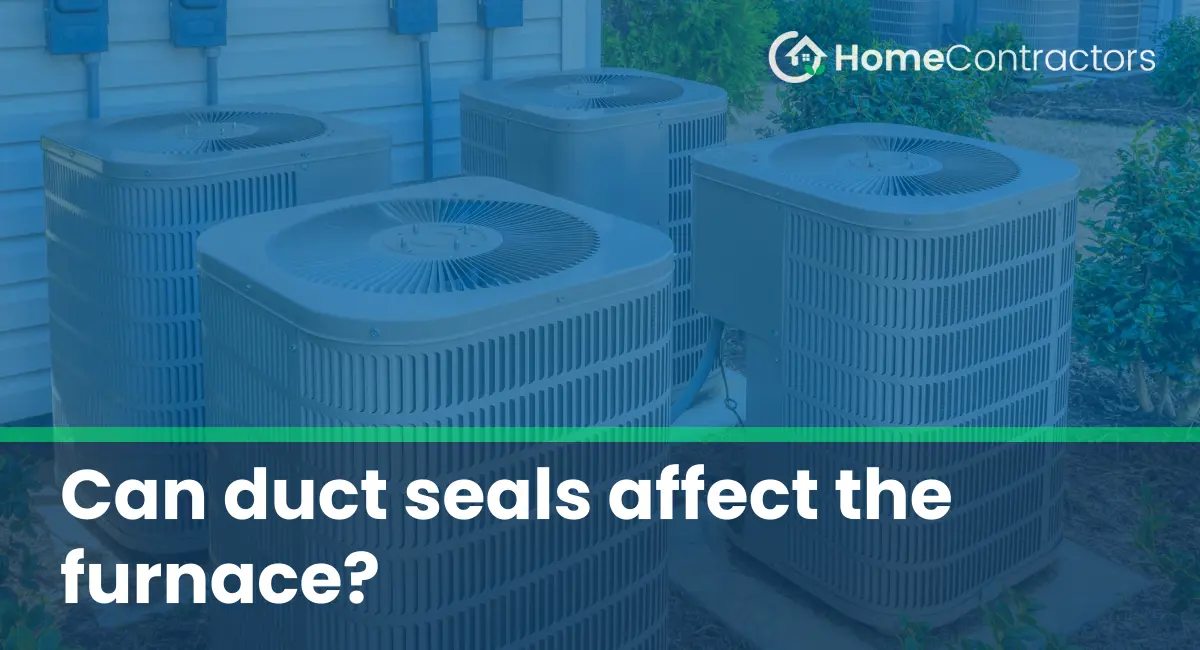Duct seals are materials used to close gaps or joints in the ductwork system. These seals prevent air leakage, ensuring that the conditioned air reaches its intended destination. The most commonly used materials for duct seals include foil tape, mastic sealant, and duct sealant. Properly sealed ducts help in maintaining a consistent airflow, reducing the workload on the furnace and improving its overall efficiency.
The Impact of Poor Duct Seals on Furnace Performance:
1. Air Leakage:
Unsealed or poorly sealed ducts are prone to air leakage. This means that the conditioned air generated by the furnace is escaping through gaps or cracks, resulting in a loss of efficiency. The furnace then has to work harder to compensate for this loss, leading to increased energy consumption and higher utility bills.
2. Inadequate Airflow:
Duct leaks can also impact the airflow within the ductwork system. When leaks occur, the air may not reach certain rooms or areas of your home, resulting in inconsistent temperatures. This could lead to discomfort, as some areas may be too cold or too hot. The furnace might also run for longer periods, trying to compensate for the inadequate airflow.
3. Increased Wear and Tear:
When the furnace has to work harder due to duct leaks, it experiences increased wear and tear. The continuous cycling on and off puts a strain on the system, reducing its lifespan. Additionally, the additional strain on the furnace’s components can lead to more frequent breakdowns and the need for costly repairs.
4. Reduced Indoor Air Quality:
Duct leaks not only allow conditioned air to escape but also enable contaminants from unconditioned spaces, such as attics or crawl spaces, to enter the ductwork system. This can lead to reduced indoor air quality, with dust, debris, mold spores, and other allergens being circulated throughout your home. Breathing in these contaminants can negatively affect the health and well-being of occupants, particularly those with respiratory issues or allergies.
The Importance of Proper Duct Sealing:
Properly sealing the ductwork is essential for maintaining the performance and longevity of your furnace. Some key benefits of ensuring effective duct seals include:
1. Enhanced Energy Efficiency:
By sealing ducts, you minimize air leakage, allowing your furnace to operate more efficiently. With less conditioned air escaping, you can achieve and maintain the desired temperature without wasting energy, leading to lower utility bills.
2. Improved Comfort and Airflow:
Effective duct sealing ensures that conditioned air reaches all areas of your home consistently. This eliminates cold or hot spots, providing a more comfortable living environment.
3. Longer Furnace Lifespan:
Reducing the strain on your furnace by eliminating air leaks through proper duct sealing can lead to an extended lifespan. By avoiding excessive wear and tear, you can avoid premature breakdowns and costly repairs.
4. Better Indoor Air Quality:
Sealing ducts prevents contaminants from entering the ductwork system, improving indoor air quality. This is especially important for individuals with respiratory conditions or allergies, as it helps create a healthier living environment.
Duct seals play a vital role in optimizing the performance and efficiency of your furnace. Neglecting their maintenance can lead to air leakage, inadequate airflow, increased wear and tear on the furnace, and reduced indoor air quality. Therefore, it is important to ensure your ductwork is properly sealed to enhance energy efficiency, improve comfort, extend the lifespan of your furnace, and maintain a healthy indoor environment. Regular maintenance and inspection of ducts by HVAC professionals will ensure that your duct seals are in good condition, allowing your furnace to operate at its best.
